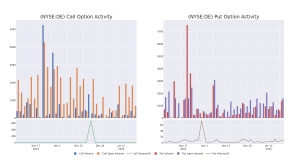Important data releases are a common occurrence on Wall Street. Between earnings season, which sees a vast majority of Wall Street’s largest and most-influential businesses report their quarterly operating results, and daily economic reports, it can be easy to miss something important.
For instance, you might have missed what can arguably be described as the most-important data dump of the fourth quarter last week. Nov. 14 marked the deadline for institutional investors with at least $100 million in assets under management (AUM) to file Form 13F with the Securities and Exchange Commission. This filing provides a snapshot that alerts investors to the stocks Wall Street’s most-prominent money managers bought and sold in the latest quarter (i.e., ended Sept. 30).
Are You Missing The Morning Scoop? Wake up with Breakfast news in your inbox every market day. Sign Up For Free »
Although investors tend to hone in on Warren Buffett’s trading activity at Berkshire Hathaway, the Oracle of Omaha is far from the only billionaire asset manager that’s been highly successful on Wall Street.
For example, Bridgewater Associates billionaire money manager Ray Dalio also has quite the following. Dalio, who runs a well-diversified fund that takes advantage of economic trends, closed out the third quarter with close to $17.7 billion in AUM.
Among the hundreds of trades executed by Dalio and his team during the September-ended quarter, perhaps none stand out more than the buying and selling activity associated with three of Wall Street’s hottest artificial intelligence (AI) stock-split stocks.
The first eye-popper is that Ray Dalio was a big-time seller of the market’s leading AI stock-split stock, Nvidia (NASDAQ: NVDA). Nvidia completed its largest forward stock split on record (10-for-1) following the close of trading on June 7.
Despite Nvidia’s AI-graphics processing units (GPUs) dominating in high-compute data centers, and the company possessing substantial pricing power on its H100 and Blackwell GPUs, Dalio’s Bridgewater shed 1,801,922 shares of Nvidia in the third quarter. This represents a 27% reduction from where things stood on June 30. Although profit-taking may be the key catalyst for Bridgewater, there’s potentially more to this story than just ringing the register.
For instance, Nvidia’s stock has enjoyed a near-parabolic increase on the heels of the AI revolution. However, history tells us that every game-changing technology since the advent of the internet has navigated its way through an early stage bubble. Investors frequently overestimate the speed at which new technologies are adopted by businesses and consumers, eventually leading to lofty expectations not being met.


